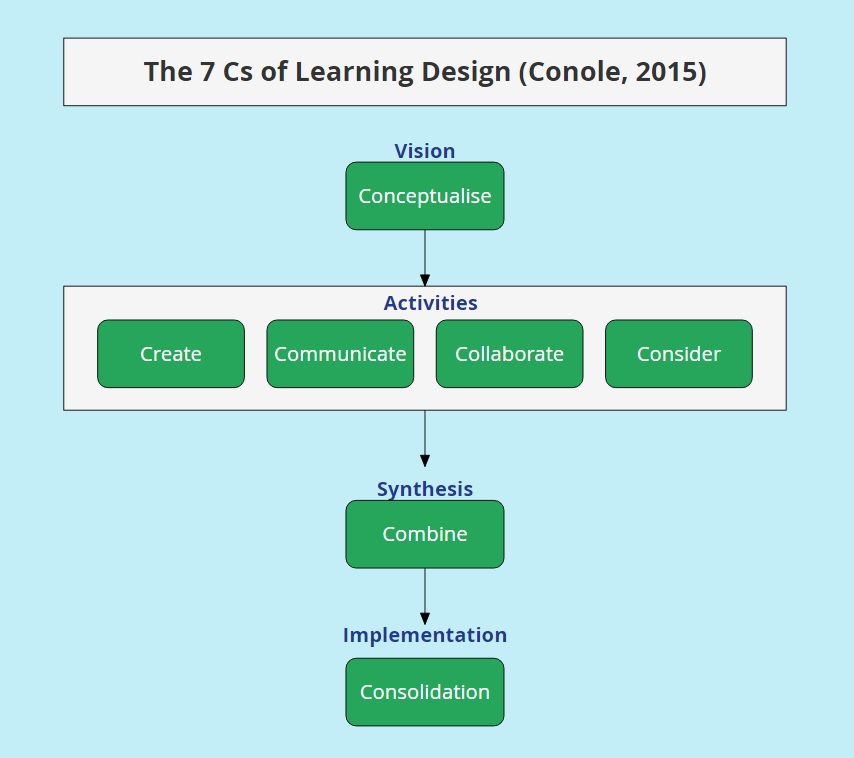How to design great online learning courses
As more and more users are taking advantage of the improved GoConqr Course Builder tool, we thought it would be a good time to look at how to design a great online learning course.
Here we present the 7Cs of learning design framework developed by Grainne Conole of the University of Leicester, to consider when designing your course.

The 7 Cs of Learning Design
- Conceptualise
- Create
- Communicate
- Collaborate
- Consider
- Combine
- Consolidation
Framework by Grainne Conole, University of Leicester
https://opennetworkedlearning.files.wordpress.com/2015/05/the-7cs-of-learning-design.pdf
Conceptualise
This is where you create a vision for the overall course. To do this you must imagine the learners and how they will experience the online learning courses that you are creating. Think in terms of age range, diversity, pre-existing skills and knowledge, and users’ learning goals and aspirations. At this stage you should articulate the core principles of the course overall and of the individual modules or sections within it.
Create
Decide what learning materials need to be created or sourced. Consider a variety of sources:
- Text: Notes or Slides
- Video
- Audio
- Visual Resources: Mind Maps, Flashcards, Flowcharts
- Assessment materials: Quizzes, tests
Use Open Educational Resources if appropriate material is available.
Communicate
You need to decide how the content will be communicated and distributed and if you need a mechanism for feedback/ communications between the learner and the teacher.
- Is an online platform required?
- Is email communication sufficient?
Collaborate
Group work is often an important part of courses in a traditional educational setting, but this can pose problems in an online space. The following are important questions to consider when thinking about the relationship between learners in online learning courses.
- Will learners work in isolation from each other?
- Is a community needed for learned support?
- Is group collaboration necessary for learning?
- Is group project work necessary for assessment?
Consider
This ‘C’ refers to where learners reflect on what they have learned. This may include self assessment and review, or peer assessment (i.e. other learners) in addition to assessment by the teacher or tutor. It may involve qualitative feedback or formal knowledge testing.
Combine
In the Combine step, the teacher or course designer takes a step back to reflect on how the user will experience the course as a whole, looking at course content, activities, and communications.
Consolidate
In this step the online learning courses design is implemented and its effectiveness is evaluated. This includes getting feedback on questions such as:
- Did the learners enjoy the course?
- What did people learn in terms of knowledge or skills?
- What behavioural changes have occurred as a result (e.g. job performance improvements)
- Are there tangible results. e.g. reduced cost, improved quality, increased production or efficiency
This feedback can be obtained through surveys or online focus groups.
GoConqr’s Course Builder tool is easy to use to combine learning materials in an engaging and interesting way for your students. While you need no training to begin using GoConqr’s tools , and we encourage you to play around, taking some time to reflect on this learning design framework can help ensure that your online learning courses are as effective and successful as possible.
Read our blog post on sourcing supplementary learning material for your course.

One thought on “The 7Cs of Learning Design”
Comments are closed.